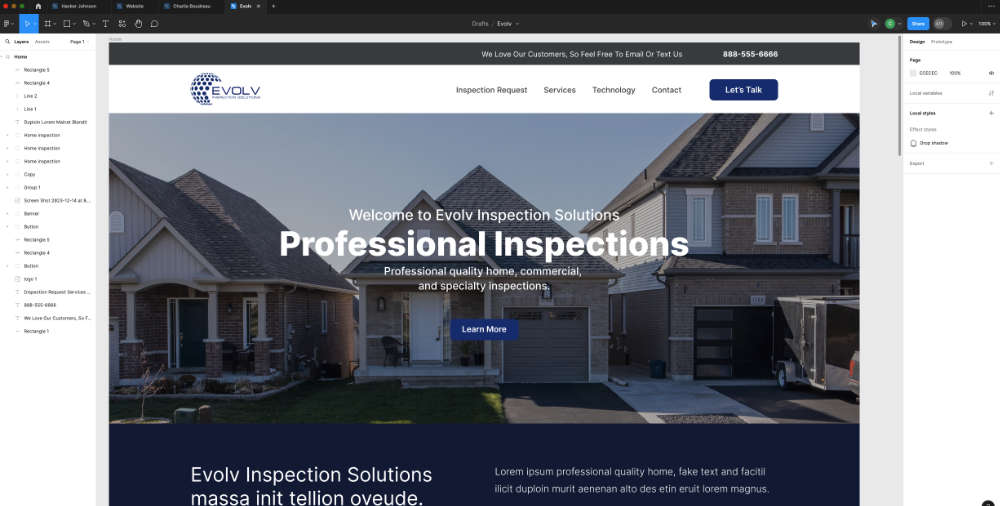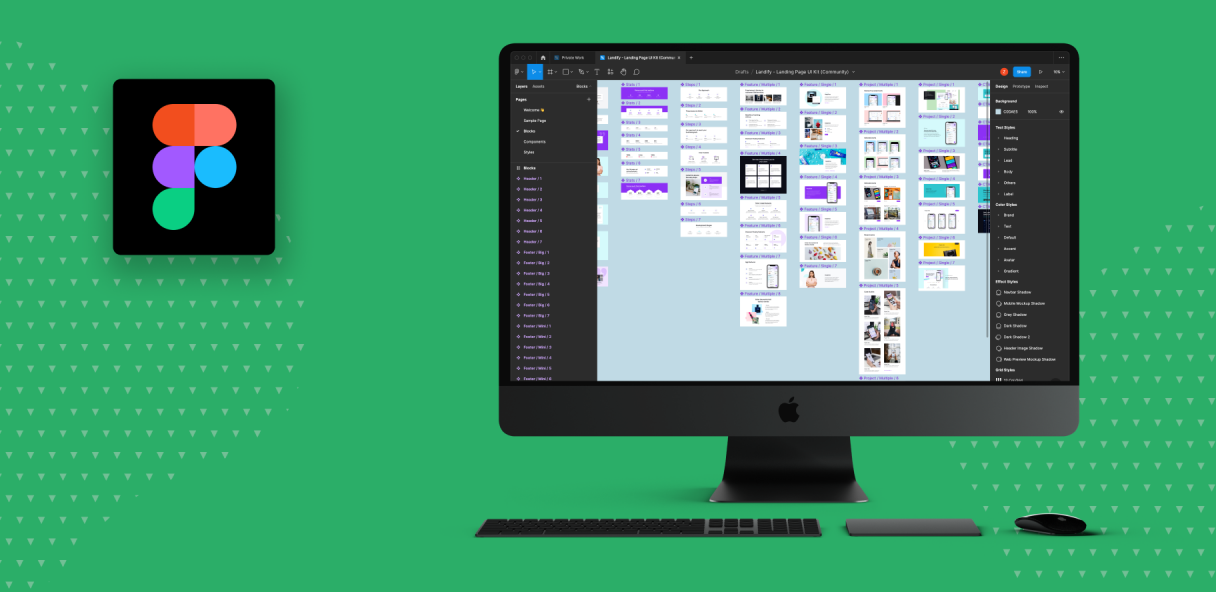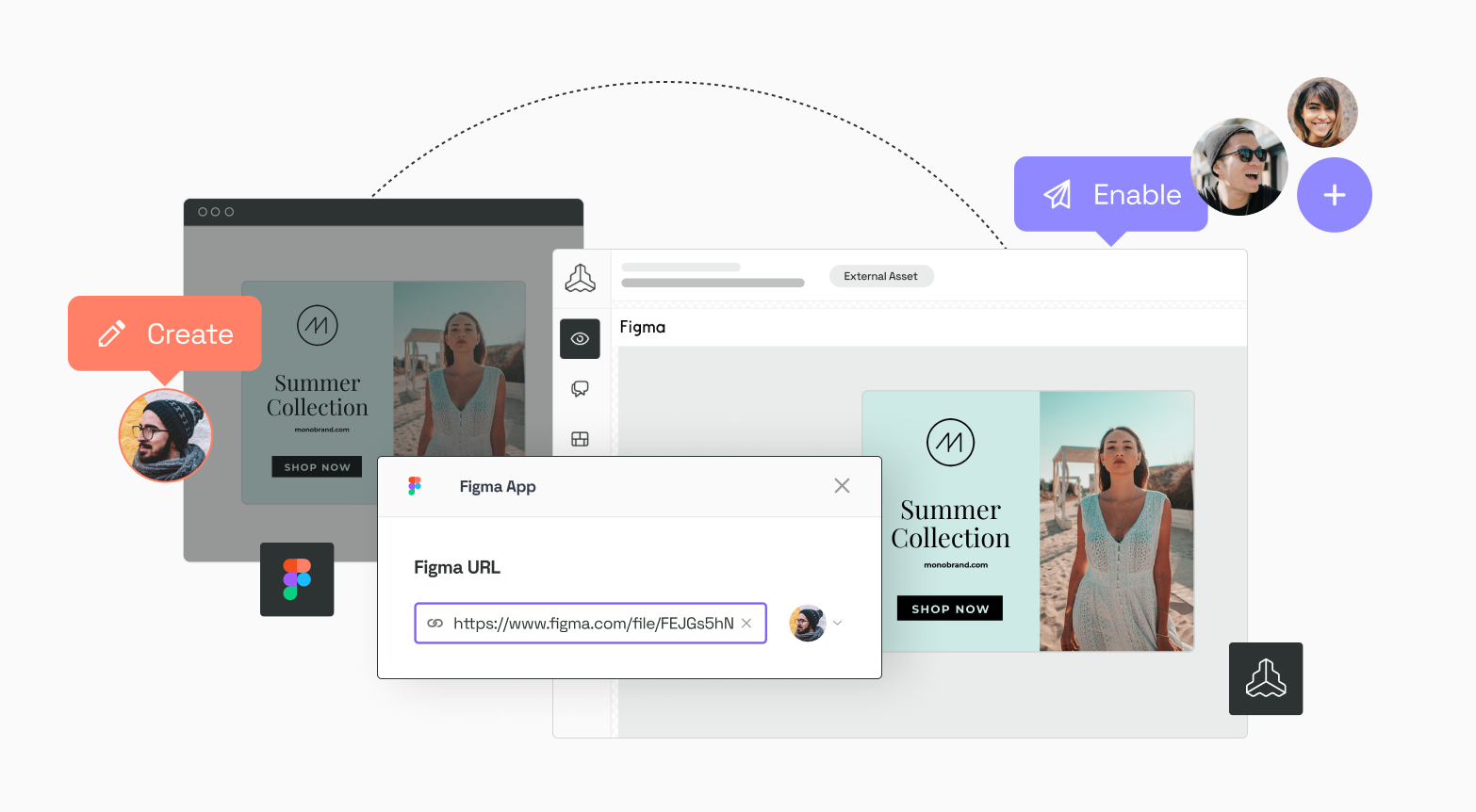The world of design software is vast, but one platform that stands out from the rest is Figma. With its intuitive interface and collaborative features, Figma has become a favorite among designers looking for a versatile tool for their projects.
While other design software may offer similar features, Figma’s unique combination of functionality and ease of use sets it apart in the industry.
From its real-time collaboration capabilities to its cloud-based storage, Figma allows designers to work seamlessly with team members from anywhere in the world.
Additionally, its accessibility across different operating systems and devices makes it a versatile choice for design professionals.
With Figma, designers can create stunning visuals and prototypes with ease, making it a top choice for those looking to streamline their workflow and produce high-quality designs.
Key Takeaways:
- Real-time Collaboration: Figma allows multiple users to work on a design project simultaneously, making it easy for teams to collaborate in real time.
- Web-Based: Unlike many design tools, Figma is entirely web-based, meaning that designers can work on projects from any computer without the need to download software.
- Auto Layout Feature: Figma’s Auto Layout feature automates the resizing and arrangement of design elements, making it quick and easy to create responsive designs for multiple devices.
- Prototyping Capabilities: Figma offers robust prototyping tools that allow designers to create interactive prototypes to test usability and user flows.
- Integrated Design System: Figma’s design system libraries enable designers to create a consistent and efficient workflow by sharing and reusing design assets across projects.

User Interface and Experience
Intuitive Design and Navigation
There’s no denying that one of the key differentiators of Figma is its intuitive user interface that caters to both seasoned designers and beginners alike.
The layout is clean and well-organized, making it easy to navigate through different menus and tools.
Whether you are working on a small project or a complex design task, Figma’s interface allows for seamless navigation and efficient workflow.
Customization and Accessibility Features
The customization options and accessibility features in Figma set it apart from other design software in the market.
The ability to create design systems, reusable components, and interactive prototypes within the same platform makes Figma a powerful tool for designers looking to streamline their workflow and collaborate effectively with team members.
Additionally, Figma offers accessibility features such as color contrast checking and interactive components that ensure designs are inclusive and user-friendly.
This commitment to customization and accessibility not only enhances the user experience but also promotes design consistency and usability across different platforms and devices.
With Figma, designers can create designs that are not only visually appealing but also functional and accessible to all users.

Real-Time Collaboration
Multi-User Editing Capabilities
Not all design tools offer the capability for real-time collaboration among team members, making it a game-changer in the design industry.
With Figma, multiple users can work on the same project simultaneously, eliminating the need for the tedious process of sending files back and forth.
Any changes made by one team member are instantly visible to others, enhancing efficiency and teamwork. This feature streamlines the design process and allows for seamless communication among team members, regardless of their physical locations.
Comments and Feedback Integration
On top of real-time collaboration, Figma also has a robust comments and feedback integration system.
This feature allows team members to leave comments directly on the design file, pinpointing specific elements that need attention or revision.
Collaboration in Figma goes beyond the real-time aspect, fostering a collaborative environment where multiple users can provide input and suggestions, leading to stronger design outcomes.
Version History and Control
An important aspect of collaboration is the ability to track changes and revert to previous versions if needed. Figma’s version history feature allows users to view past iterations of a design, making it easy to compare changes and track progress over time.
Control over the design process is critical in a collaborative setting, and Figma’s version history and control functionalities give users the confidence to experiment and make edits without the fear of losing previous work.
Platform Independence and Accessibility
Cloud-Based Architecture
After being founded in 2012, Figma has disrupted the design industry with its cloud-based architecture, setting it apart from traditional design software.
This cloud-based approach allows designers to collaborate in real-time, regardless of their physical location. Design files are stored securely in the cloud, eliminating the need for manual file saving and ensuring that the latest version is always accessible.
Cross-Platform Compatibility
Any designer can attest to the frustration of switching between different devices and operating systems while working on a project.
Figma solves this problem with its cross-platform compatibility, enabling seamless transitions between desktop and mobile devices. Whether you’re using a Mac, Windows, or even a Chromebook, Figma provides a consistent experience across all platforms.
Apart from its desktop and mobile applications, Figma also offers a web-based platform that can be accessed through a browser.
This means that designers can work on their projects from any device with an internet connection, further enhancing accessibility and flexibility.
Offline Functionality and Performance
Functionality
Despite being a cloud-based tool, Figma understands the importance of offline functionality. Designers can download files for offline use, ensuring that they can continue working even without an internet connection.
This feature is particularly useful for those who travel frequently or have limited access to the internet.
Platform
Figma’s offline functionality is complemented by its impressive performance, allowing designers to work with large design files without experiencing lag or delays.
This combination of offline capabilities and high performance sets Figma apart from other design software, making it a top choice for professionals in the field.
Extensibility and Integration
Despite the many design tools available in the market, Figma stands out due to its extensive extensibility and integration capabilities.
These features empower designers to enhance their workflow, streamline processes, and customize their design environment to suit their specific needs.
Plugin Ecosystem
Plugin support is one of the key features that sets Figma apart from its competitors. The Plugin Ecosystem in Figma allows users to access a wide range of third-party plugins that extend the software’s functionality.
These plugins cover various aspects of the design process, from user experience and prototyping to project management and accessibility. With over 500 plugins available, designers can easily find tools that help them work more efficiently and creatively within the Figma platform.
API and Third-Party Tool Integrations
Integration capabilities in Figma go beyond just plugins. Figma offers an API that enables developers to create custom integrations with third-party tools and services.
This API allows designers to connect Figma with other vital tools in their workflow, such as project management platforms, version control systems, and collaboration tools. By integrating Figma with their preferred tools, designers can centralize their workflow, automate repetitive tasks, and ensure seamless collaboration across their design projects.
In addition to the API, Figma also offers direct integrations with popular tools like Jira, Trello, Slack, and Zeplin.
These integrations streamline the design process further by enabling designers to directly transfer assets, update designs, and collaborate with team members without leaving the Figma platform.

Advanced Design Features
All great design software offers a range of advanced design features that help create high-quality designs efficiently. Figma stands out from the competition by providing a comprehensive set of tools that cater to the needs of both individual designers and collaborative teams.
Let’s research into some of the key advanced design features that make Figma a go-to platform for designers.
Vector Editing and Scalability
Scalability
- Vector Editing: Figma’s robust vector editing capabilities allow designers to create and manipulate complex shapes with ease. The precision and flexibility offered by vector editing tools enable users to achieve pixel-perfect designs.
- Scalability: Figma’s vector graphics are resolution-independent, ensuring that designs remain crisp and clear across different devices and screen sizes. The scalability of vector elements in Figma makes it a reliable choice for creating responsive designs.
Prototyping and Animation Tools
Design
Allowing designers to create interactive prototypes and animations directly within the design tool streamlines the design process and facilitates better communication among team members. Figma’s prototyping and animation tools enable designers to bring their designs to life, providing a more engaging experience for stakeholders during the review process.
Responsive Design and Constraints
Understanding
- Vector: Figma’s responsive design features empower designers to create layouts that adapt seamlessly to different screens and devices. By utilizing constraints and responsive design tools, designers can ensure that their designs maintain consistency and functionality across various platforms.
Constraints
Figma’s constraints feature allows designers to define how elements behave when the design is resized or adapted to different screen sizes.
By setting constraints on objects, designers can maintain the intended design hierarchy and structure, ensuring a cohesive design system across all breakpoints.
Pricing and Licensing Model
Subscription-Based Model
Many design software companies offer a subscription-based model, and Figma is no different. Users can choose between a free plan, suitable for personal projects with limited features, or opt for a paid subscription for more advanced capabilities.
The paid plans include individual, professional, and organization options, each tailored to different needs and team sizes.
Cost-Benefit Analysis Compared to Competitors
One of Figma’s key advantages over its competitors is its cost-effectiveness. While some design tools require a hefty upfront payment or charge for updates, Figma offers a more affordable subscription model with regular updates included.
This makes it easier for individuals and teams to budget for design software without compromising on quality or features.
Cost-Benefit Analysis Compared to Competitors
| Criteria | Figma |
| Pricing | Affordable subscription plans |
| Updates | Regular updates included in subscription |
Plus
Many design software companies offer a subscription-based model, and Figma is no different. Users can choose between a free plan, suitable for personal projects with limited features, or opt for a paid subscription for more advanced capabilities.
The paid plans include individual, professional, and organization options, each tailored to different needs and team sizes.
| Criteria | Figma |
| Pricing | Affordable subscription plans |
| Updates | Regular updates included in subscription |
Community and Support
Extensive User Community
Unlike other design software, Figma boasts an extensive user community that is actively engaged in sharing tips, tricks, and resources to help fellow designers.
An invaluable resource, this community provides a platform for users to connect, collaborate, and inspire one another.
Whether you’re a beginner looking for guidance or an experienced professional seeking new perspectives, the Figma user community offers a wealth of knowledge and support.
Educational Resources and Support
On top of its vibrant user community, Figma goes the extra mile by offering a variety of educational resources and support options.
From official documentation and tutorials to webinars and workshops, Figma provides users with the tools they need to master the software and stay up-to-date on the latest features and best practices. Whether you prefer self-paced learning or interactive sessions, Figma has you covered.
Extensive educational resources and support ensure that users have the guidance they need to leverage Figma to its fullest potential.
Whether you’re looking to enhance your design skills, troubleshoot a problem, or explore new techniques, Figma’s educational resources and support network are there to help you every step of the way.
To wrap up
So, in conclusion, Figma sets itself apart from other design software through its collaborative features, real-time editing capabilities, and cross-platform accessibility.
Its cloud-based nature allows for seamless teamwork among designers, developers, and stakeholders, making it a go-to tool for modern design workflows.
By offering a wide range of design and prototyping tools in one platform, Figma streamlines the design process and enhances productivity for teams of all sizes.


